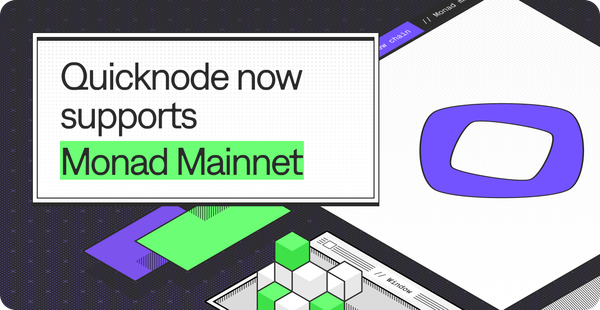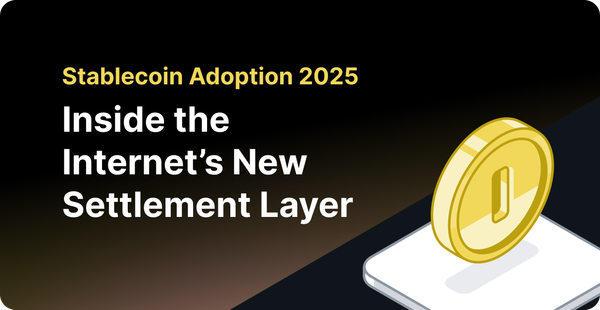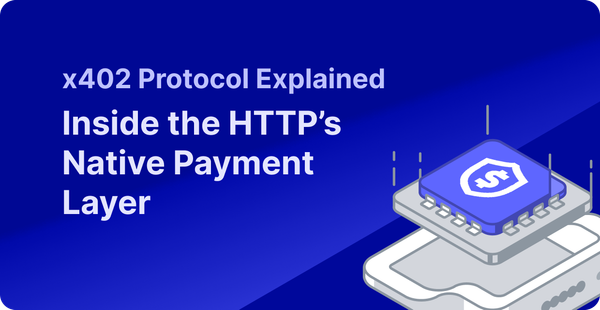Inside Ethereum Protocol Update 001: What Scale L1 Means for Builders
Ethereum Protocol Update 001 is here: 45M gas limits, history expiry, Block-Level Access Lists, and zkEVM attester clients explained

It’s been over a decade since Ethereum came to life.
Since then, Ethereum's evolution has followed a familiar pattern: scattered research initiatives, client team experiments, and academic proposals that often took years to coordinate into meaningful protocol changes.
All of these while the broader scaling challenges — gas limits, storage bloat, sequential processing — persisted as separate problems requiring separate solutions.
Protocol Update 001 marks the end of this fragmented approach.
The days of scattered improvements and isolated academic projects are giving way to coordinated engineering efforts with clear accountability, measurable targets, and synchronized deployment timelines.
For the first time, the Ethereum Foundation is presenting scaling as a roadmap executed under a unified banner: The Protocol Update 001.
To understand the significance of this first update, we need to start with how Ethereum Foundation’s research itself has been reorganized.
The Story Behind ‘Protocol’
In June 2025, the Ethereum Foundation reorganized and combined its research and development efforts under a single banner: Protocol.
Instead of scattered updates across client teams and individual researchers, the EF created a dedicated group with clear accountability and three strategic pillars: Scale L1, Scale Blobs, and Improve UX.
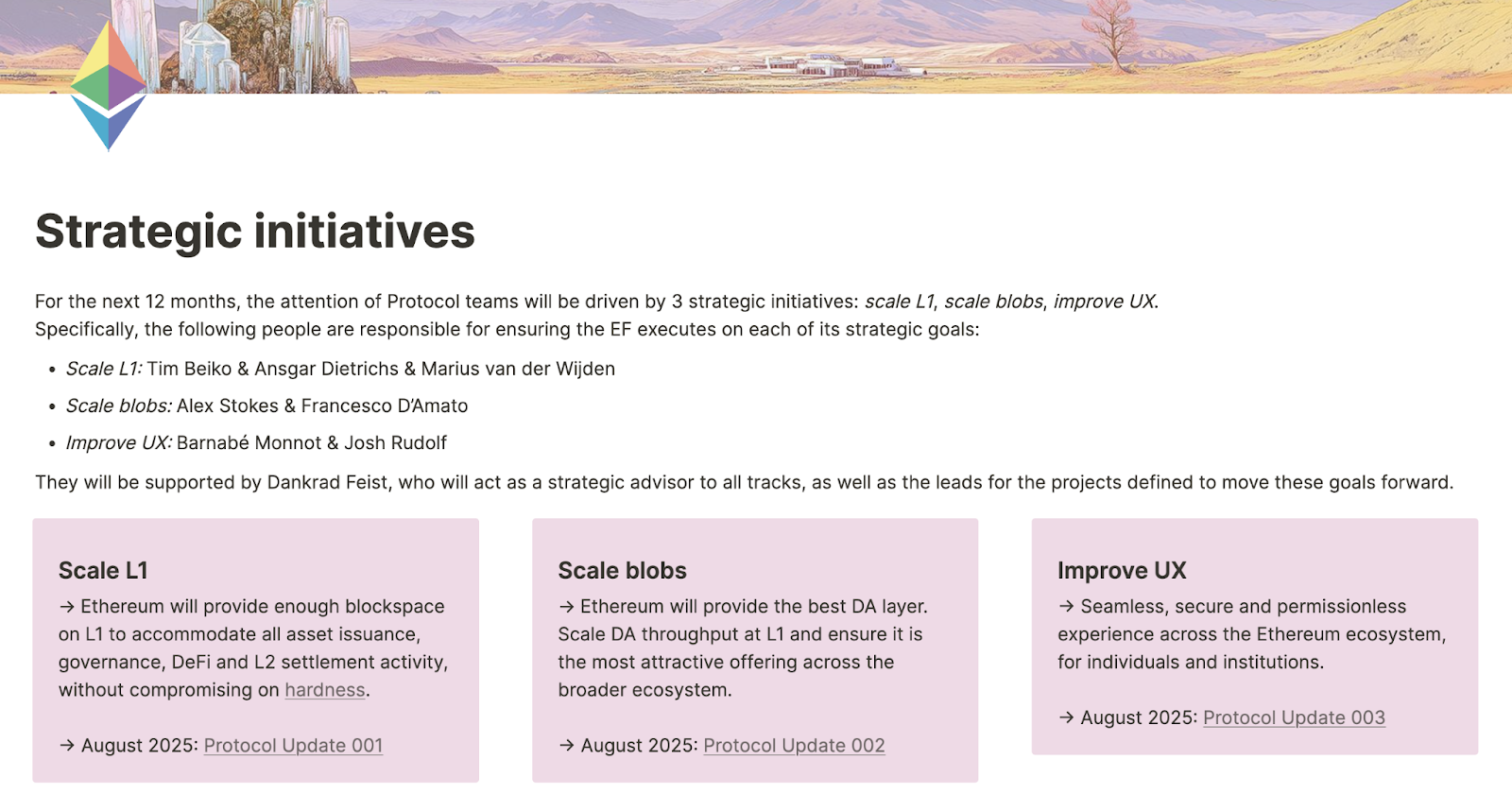
The idea was to not only make progress faster but also to communicate it more clearly, with each initiative led by named researchers and engineers responsible.
And today, we are discussing the very first installment of the Protocol updates i.e. Scale L1.
What Is Scale L1 and Why Update 001 Matters Now
Scale L1 is Ethereum’s official recognition of how the underlying blockchain itself is turning into a bottleneck for the whole ecosystem and the map forward.
Yes, layer-2 (L2s) networks like rollups grab headlines with their transaction throughput promises but the reality is Ethereum mainnet still processes every L2 transaction's final settlement, data availability, and dispute resolution.
When L2s scale to millions of users, L1 becomes the bottleneck and that bottleneck is approaching fast.
Scale L1 makes crystal clear that, despite layer 2s having a role to play in scaling Ethereum, the base layer itself still needs headroom.
A congested, expensive Layer 1 weakens the whole ecosystem: rollups struggle with data costs, users face high fees, and running a node becomes harder over time.
Zooming out, Scale L1 is a four-pronged approach:
- Higher gas limits,
- History expiry,
- Block-Level Access Lists, and
- zkEVM attester clients
With all these, Ethereum is testing how far the main chain can stretch without breaking its decentralization guarantees.
Now, let's dive deeper into each approach, starting with the most immediately visible change: gas limit increases.
Gas Limits: Raising the Gas Limit to 100 Million
Ethereum’s gas limit is the protocol’s built-in cap on how much computation and storage a block can contain. Think of it as block capacity: the higher the limit, the more transactions can be squeezed into every 12-second slot.
This limit has quietly but systematically increased from 30M to 45M gas per block as of July 2025 i.e. a 50% throughput boost with just coordinated validator consensus.
With Protocol Update 001, that ceiling has begun to rise with a longer-term target of 100 million.
The promise is clear: more throughput and lower fees per transaction.
But the trade-offs are equally important: larger blocks place heavier loads on validators’ CPUs, memory, and bandwidth, raising the bar for running a full node.
In practice, Ethereum is betting that ongoing client optimizations, plus smarter gas repricing, can absorb the extra weight without tilting the network toward centralization.
But block capacity alone isn’t enough. Ethereum also needs to make running a node sustainable as history grows.
History Expiry: Saving Nodes From Drowning in Data
As Ethereum grows, so does the burden of storing its entire history from the 2015 genesis block through millions of transactions and receipts. The problem isn't just storage costs; it's the barrier this creates for new validators who need days to sync and significant hardware investments just to participate in consensus.
Running a node harder = nudging the network toward centralization.
History expiry is Ethereum’s answer, a biological solution, in shedding old skin so new growth can flourish.
The implementation follows a two-phase approach — partial expiry (already live) and rolling expiry (coming soon).
- Partial expiry: pruning pre-Merge data and instantly freeing up 300–500 GB of disk space.
- Rolling expiry: nodes continuously shed data older than a year, keeping storage needs capped even as usage grows.
The effect is straightforward: lighter, cheaper nodes mean more people can run them, boosting decentralization.
Note: All major execution clients now support this pruning by default, while the Portal Network ensures deleted data remains accessible through a decentralized peer-to-peer system where each node stores small chunks rather than everything.
With storage bloat addressed, the next bottleneck is how efficiently transactions themselves are processed.
Block-Level Access Lists (BALs): Kickstarting Ethereum's Multithreading Phase
BALs are confirmed as the centerpiece of 2026's Glamsterdam upgrade. But, what are they?
Right now, Ethereum executes every transaction in a block one after another, even if some of them don’t interact, like a single-threaded CPU from the 1990s.
Guess what: In 2025, with modern multi-core processors, this sequential model means a majority of validator hardware is largely idle.
Block-Level Access Lists (BALs) change that by requiring block producers to declare, up front, which accounts and storage slots each transaction will touch. With this map in hand, clients can safely parallelize execution: running independent transactions side by side, preloading state data in bulk, and cutting down on wasted disk I/O.
But, the technical complexity is significant for BALs.
Builders must generate comprehensive access maps for every transaction adding ~40KB of metadata per block.
But the payoff is clear: faster block processing, more predictable performance, and better use of today’s hardware.
Parallel execution through BALs dramatically improves hardware utilization, but Ethereum's most radical efficiency gain comes from eliminating redundant computation entirely.
zkEVM Attester Clients: The Promise of Lightweight Cryptographic Verification
Ethereum’s most forward-looking bet in Scale L1 is the idea of zkEVM attester clients.
Instead of every validator re-executing all transactions to confirm a block, a specialized prover could generate a zero-knowledge proof of that execution. Other nodes would then only need to verify the succinct proof — a process that takes milliseconds — to know the block is valid.
If proving can keep pace with block times, Ethereum could drastically cut the computational burden on validators, opening the door to even higher gas limits without sacrificing decentralization.
Outside this, there are other positive implications like:
- zkEVM attester clients blur the line between consensus and execution, enabling stateless-like operation where validators sync in minutes.
- Hardware requirements plummet to consensus-layer levels — potentially enabling Ethereum verification on low-powered devices.
The only trade-off will be the proof generation consolidating into specialized operations requiring over $100,000 in GPU hardware.
Now that we've explored each technical improvement individually, let's recap each of them and examine how they work together as a scaling strategy.
Recap: The Four Pillars of Scale L1
By now, we know that Protocol Update 001 is a coordinated attack on Ethereum's scaling bottlenecks that work synergistically.
Let’s do a quick recap of all the four updates:
- Gas limit increases: From 30M to a 100 M gas per block target delivering immediate throughput gains through larger block capacity.
- History expiry: Eliminates 300-500GB storage bloat per node, removing barriers that prevent new validators from participating in consensus.
- Block-level access lists: By declaring which parts of state transactions will touch, block builders can enable safe parallel execution.
- zkEVM attester clients: Replaces heavy transaction re-execution with lightweight cryptographic proof verification, dramatically reducing validator computational requirements.
The genius lies in how these improvements reinforce each other.
History expiry makes it easier for operators to handle higher gas limits. Parallel execution through BALs maximizes the benefit of increased block capacity. zkEVM proving eliminates the validator computational bottleneck that would otherwise limit gas limit increases.
The technical picture is clear. But how do these changes actually shape the experience of Ethereum’s participants?
What Scale L1 Means for Builders, Node Operators, and the Ecosystem
Scale L1 with its four major updates is reshaping Ethereum right in front of us. While, on paper, the updates look positive for the entire space, let’s understand what they actually mean in practice for those building, running, and using the network.
Protocol Update 001: What is Means For Builders
Simply put, these updates fundamentally expand what's possible on Ethereum mainnet.
Higher gas limits mean complex DeFi protocols can execute sophisticated multi-step operations without hitting block space constraints, while BALs' parallel processing could enable real-time gaming and high-frequency trading applications previously impossible on L1.
However, builders face new complexity: BALs require declaring state access patterns upfront, adding transaction construction overhead that may favor teams with deeper technical resources over smaller developers.
Protocol Update 001: What it Means For Node Operators
Scale L1 and its changes create a mixed landscape of opportunities and pressures.
History expiry trims hundreds of gigabytes from disk usage, while continuous pruning will keep storage costs predictable into the future. At the same time, BALs and zkEVM attesters aim to make block processing faster and less resource-intensive.
In practice, this means running a node should become easier, not harder, even as the chain grows busier.
However, in the transition period, validation among operators may consolidate with those who can invest in the latest hardware to handle heavier block processing.
Protocol Update 001: What it Means For Ethereum Ecosystem
Scale L1 is a confidence signal for anyone in and around Ethereum.
Not only the technical upgrades, but the communication and transparency with the 'Protocol' is a high signal for the ecosystem. The Update 001 itself shows that Ethereum isn’t leaving scaling entirely to L2s and the base layer itself is being tuned to handle heavier traffic.
The result is a healthier foundation for developers, investors, and users who rely on Ethereum as the settlement layer of choice.
As these scaling improvements roll out, the infrastructure demands on RPC providers and indexing services will intensify dramatically creating both challenges and opportunities for the teams building Ethereum's data layer.
Infrastructure at Scale: QuickNode’s Role in Ethereum’s Next Chapter
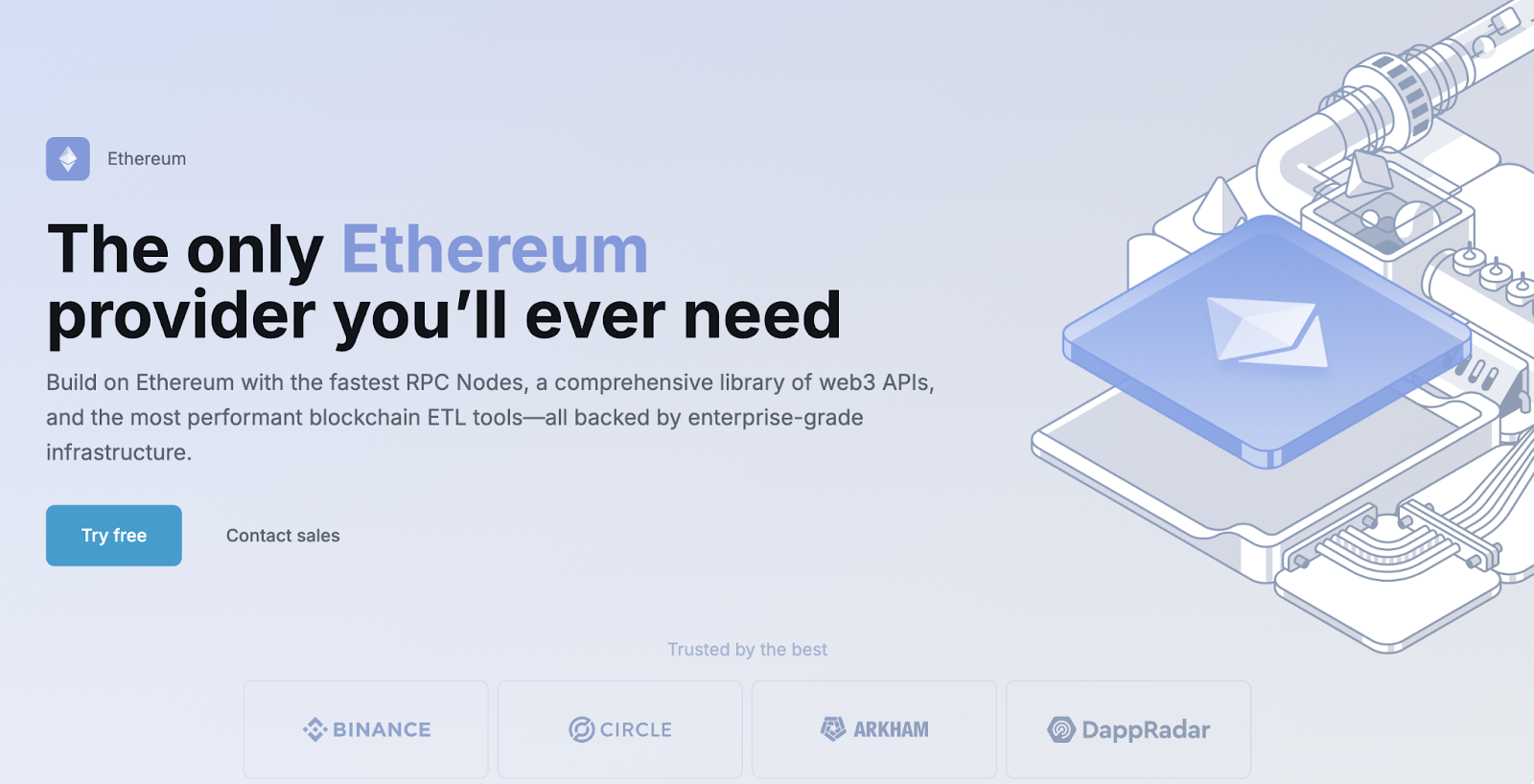
Scaling Layer 1 is more than a protocol milestone, it’s an infrastructure challenge. Higher gas limits translate directly into higher requests per second (RPS) and heavier node workloads. At the same time, cross-L2 applications demand unified indexing and infrastructure abstraction that hide the complexity of a fragmented ecosystem.
QuickNode's approach to multi-client redundancy, global peering infrastructure, and unified indexing across 30+ networks positions it to handle the infrastructure demands that Protocol Update 001 will create.
With autoscaling RPC endpoints, intelligent caching, and optimized peering, QuickNode is built to handle a 100M-gas Ethereum and beyond.
Access Ethereum in the fastest and the most reliable way with QuickNode RPC offerings.
Multi-client, multi-region availability ensures resilience even as block sizes grow, while multi-chain indexing lets developers query across Ethereum and its L2s without reinventing their data stack.
As gas limits push higher and new execution models like BALs and zk-attesters come online, builders will need infrastructure that grows in lockstep.
QuickNode’s focus on performance, availability, and abstraction ensures that when Ethereum scales, the applications built on it can scale too.
Check out some QuickNode’s resources for Ethereum developers.
Imagining the Road Ahead for Ethereum
Protocol Update 001 shows that Ethereum is not content to let scaling rest on rollups alone. By raising gas limits, pruning history, introducing parallel execution, and exploring zk-proof validation, the base layer is being refactored into a faster, leaner, more durable foundation.
Zooming out, the most important realization from the Protocol Update is not the promise of simply cheaper transactions or lighter nodes.
It is that Ethereum can evolve — shedding old weight, adopting new execution models, and embedding cryptography at its core — while staying true to its decentralization ethos.
Protocol Update 001 marks the end of isolated improvements and academic research projects that nowhere pushed Ethereum forward.
About QuickNode
QuickNode is a leading blockchain infrastructure and solutions provider. Since 2017, we’ve helped thousands of developers and companies scale their onchain applications with lightning-fast, reliable access to over 70 blockchains. Stay ahead in the world of Web3 — subscribe to our newsletter for insights, updates, and the latest innovations shaping the future!


